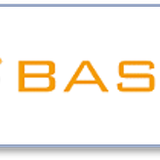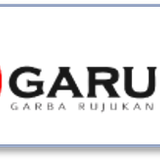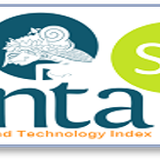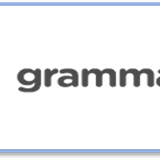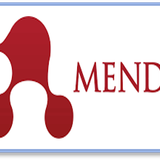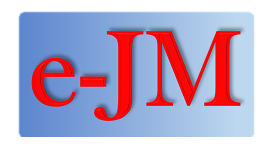The Evaluation of Lecturer's Performance and Sekolah Tinggi Perikanan's Performance Through Intellectual Capital
DOI:
https://doi.org/10.24912/jm.v23i1.442Abstract
Intellectual capital is an intangible resource owned by the organization that can be used to create value for the organization. Intellectual capital consists of the source of human capital, the organization itself and its relationship to the environment. The purpose of this research is to analyze the effect of intellectual capital on lecturer and organizational performance and the effect of lecturer performance on organizational performance. Lecturer performance was measured by Key Performance Indicator value. Organizational performance was measured by perspective of costumer, finance, internal business process, learning and growth. Respondents of this research were 106 lecturers in Sekolah Tinggi Perikanan. Data was analyzed by descriptive analysis and Structural Equation Modeling (SEM) with LISREL. The results showed that intellectual capital has positive effect and significant on lecturer and organizational performance. Lecturer performance has positive effect on organizational performance, but insignificant. University is the organization which high intellectual capital, so organization could be able to manage them for improving performance.
References
Badan Kepegawaian Negara. (2013). Peraturan Kepala Badan Kepegawaian Negara Nomor 1 tahun 2013 tentang Ketentuan Pelaksanaan PP Nomor 46 tahun 2011 tentang Penilaian Prestasi Kerja PNS. Berita Negara Republik Indonesia Tahun 2013 Nomor 33. Jakarta.
Bejinaru, R. (2017). Knowledge strategies aiming to improve the intellectual capital of universities. Management and Marketing. Challenges for the Knowledge Society. 12(3): 500-523.
Bratianu, C. and F. Pinzaru. (2015). Challenges for the university intellectual capital in the knowledge economy. Management Dynamics in the Knowledge Economy. 3(4): 609-627.
Bontis, N., W.C.C. Keow and S. Richardson. (2000). Intellectual capital and business performance in Malaysian industries. Journal of Intellectual capital. 1(1): 85-100.
Chatterji, N. and R. Kiran. (2017). Role of human and relational capital of universities as underpinnings of a knowledge economy: A structural modeling perspective from north Indian universities. International Journal of Educational Development. 56: 52-61.
Corcoles, Y.R., J.F.S. Penalver and A.T. Ponce. (2011). Intellectual capital in Spanish public universities: stakeholders’ information needs. Journal of Intellectual Capital. 12(3): 356-376. DOI 10.1108/14691931111154689.
Dessler, G. (2013). Human resource management. 13th ed. Pearson
Edvinsson, L and P. Sullivan. (1996). Developing a model for managing intellectual capital. European Management Journal. 14(4): 356-364.
Ekwe, M.C. (2013). Effect of Intellectual capitals on employee productivity of banks in developing economies: The Nigeria Experience. Research Journal of Finance and Accounting. 4(11): 139-148.
Engel, K.S., H. Moosbrugger, and H. Müller. (2003). Evaluating the fit of structural equation models: tests of significance and descriptive goodness-of-fit measures. Methodes of Psychological Research Online. 8(2): 23-74.
Fauzan, M. (2012). Peningkatan kinerja dosen berbasis modal sosial dan dukungan organisasional di PTS Kota Semarang. Jurnal Bisnis dan Ekonomi (JBE). 9(2): 188 – 202.
Fazlagic, J. and R. Skikiewicz. (2014). The role of intellectual capital in building competitive advantage of non-public universities. 6th International Scientific Conference on Economic and Social Development and 3rd Eastern European ESD Conference. Business Continuity: 547-556.
Gaol, C.J.L. (2014). A to Z human capital. Manajemen sumber daya manusia. Konsep, teori dan pemgembangan dalam konteks organisasi publik dan bisnis. Jakarta: Grasindo.
Gogan, L.M., A. Artene, I. Sarca and A. Draghici. (2016). The impact of intellectual capital on organizational performance. Procedia - Social and Behavioral Sciences 221: 194 – 202.
Ghozali, I. (2008). Struktural Equation Modeling Metode Alternatif dengan Partial Least Square (PLS). Edisi Dua. Semarang: Badan Penerbit Universitas Diponegoro.
Hair, J.F., W.C. Black, B.J. Babin, dan R.E. Anderson. (2014). Multivariate Data Analysis. 7th ed. Pearson Education Limited.
Hashim, M.J., I. Osman and S.M. Alhabshic. (2015). Effect of intellectual capital on organizational performance. Procedia - Social and Behavioral Sciences 211: 207 – 214.
Helmiatin, O. Idrus, and I. Waty. (2016). The Influence of intellectual capital on the performance of employees. Proceeding of the First American Academic Research Conference on Global Business, Economics, Finance and Social Sciences: 1-10.
Ismiyarto, S., Suwitri, Y. Warella and Sundarso. (2015). Organizational culture, motivation, job satisfaction and performance of employees toward the implementation of internal bureaucracy reform in the ministry for the empowerment of state apparatus and bureaucracy reform (The Ministry of PANRB).
Julianry, A., R. Syarief, dan M. J. Affandi. (2017). Pengaruh pelatihan dan motivasi terhadap kinerja karyawan serta kinerja organisasi Kementerian Komunikasi dan Informatika. Jurnal Aplikasi Bisnis dan Manajemen. 3(2): 236-245.
Kale, P., H. Singh, and H. Perlmutter. (2000). Learning and protection of proprietary assets in strategic alliances: building relational capital. Strategic Management Journal. 21: 217–237.
Kaplan, R.S. dan D.P. Norton. (1996). The balanced scorecard: Translating strategy into action. Massachusetts. Harvard Business School Press [UK].
Katili, P.B., D. Maulida, dan N. Ummi. (2016). Pengaruh intellectual capital terhadap kinerja pegawai. Seminar Nasional Sainsdan Teknologi: 1-7.
Kemenristekdikti. (2018). Pangkalan Data Pendidikan Tinggi (Retrived from: https://forlap.ristekdikti.go.id/perguruantinggi/homegraphpt /1-10-2018).
Knobel, M., T.P. Simõesa, and C.H.B. Cruza. (2013). International collaborations between research universities: experiences and best practices. Studies in Higher Education. 38(3): 405–424. DOI: 10.1080/03075079.2013.773793.
Leitner, K.H., A. Curaj, S.E. Perez, J. Fazlagic, K. Kalemis, Z. Martinaitis, G. Secundo, M.A. Sicilia, and K. Zaksa. (2014). A strategic approach for intellectual capital management in European universities”, Guidelines for implementation, UEFISCDI Blueprint Series No. 1, Executive Agency for Higher Education, Research, Development and Innovation Funding, Bucharest.
Margaretha M, dan S. Saragih. (2012). Faktor-faktor penentu produktivitas penelitian dosen sebagai implementasi integritas profesi. Zenit. 1(3): 195-208.
Mayo, A. (2000). The role of employee development in the growth of intellectual capital. Personnel Review. 29(4): 521-533.
Meritum. (2002). Guidelines for managing and reporting on intangibles (intellectual capital report). Madrid: Fundacion Airtel Movil.
Muhammad, S. (2017). Pentingnya pengembangan budaya organisasi pada perguruan tinggi. Jurnal Ilmiah WIDYA. 4(1): 192-203.
Nazem, F. and M. Mozaiini. (2014). A structural equation model of intellectual capital based on organizational culture in higher education institutions. European Journal of Experimental Biology. 4(1): 71-76.
Nulhaqim, S.A., R.D. Heryadi, R. Pancasilawan, dan M. Fedryansyah. (2016). Peranan perguruan tinggi dalam meningkatkan kualitas pendidikan di Indonesia untuk menghadapi Asean Community 2015. Studikasus: Universitas Indonesia, Universitas Padjadjaran, Institut Teknologi Bandung. Social Work Jurnal. 6(2): 154-272.
Ozer, G, E. Ergun, and O. Yilmaz. (2014). Effects of intellectual capital on qualitative and quantitative performance: evidence from turkey. SAJEMS NS 18(1): 143-154. DOI: http://dx.doi.org/10.17159/2222-3436/2015/v18n2a1.
Pamungkas, A.D.P, D. Hamid dan A. Prasetya. (2017). Pengaruh pendidikan dan pengalaman kerja terhadap kemampuan kerja dan kinerja karyawan. Jurnal Administrasi Bisnis. 43(1): 96-103.
Putri, I.A.J dan D. Mashudi. (2016). Analisis pengaruh pendidikan dan pelatihan terhadap kinerja dosen politeknik pelayaran Surabaya dengan motivasi kerja sebagai variabel intervening. Jurnal Doktor Ekonomi. 1(1): 99-116.
Republik Indonesia. (2012). Undang-UndangNomor 12 Tahun 2012 tentangPendidikan Tinggi. Lembaran Negara Republik Indonesia Tahun 2012 Nomor 158. KementerianSekretariat Negara. Jakarta.
Republik Indonesia. (2005). Undang-undangNomor 14 tahun 2005 tentang Guru danDosen. Lembaran Negara Republik Indonesia Tahun 2005 Nomor 157. KementerianSekretariat Negara. Jakarta.
Robbins S.P. and M. Coulter. (2010). Manajemen. Ed ke-10. Jilid 2. Sabran B, Putera DB, penerjemah; Sallama NI, editor. Jakarta (ID): Penerbit Erlangga. Terjemahan dari: Management. 10th.
Robbins, S.P. dan T.A. Judge. (2013). Organizational Behavior. 15th ed. Pearson
Rossi, F.M., F. Citro, and M. Bisogno. (2016). Intellectual capital in action: evidence from Italian local governments. Journal of Intellectual Capital. 17(4): 696-713. DOI 10.1108/JIC-01-2016-0011.
Saeed, R., A. Sami, R.N. Lodhi and A. Iqbal. (2013). Intellectual capital and organizational performance: An empirical study in telecom sector of Pakistan. Middle-East Journal of Scientific Research. 18 (4): 517-523.
Secundo, G, A. Margherita, G. Elia, and G. Passiante. (2010). Intangible assets in higher education and research: mission, performance or both? Journal of Intellectual Capital. 11(2): 140-157. DOI 10.1108/14691931011039651.
Shahzad, F. (2014). Impact of organizational culture on employees’ job performance an empirical study of software houses in Pakistan. International Journal of Commerce and Management. 24(3): 219-227.
Shehzad, U, Z. Fareed, B. Zulfiqar, F. Shahzad, and H.S. Latif. (2014). The Impact of intellectual capital on the performance of universities. European Journal of Contemporary Education. 10 (4): 273-280. DOI: 10.13187/ejced.2014.10.273.
Sinambela, L. (2012). Kinerja pegawai: Teori, pengukuran dan implikasi. Yogyakarta: GrahaIlmu.
Starovic, D dan B. Marr. (2004). Understanding corporate value: managing and reporting intellectual capital. Chartered Institute of Management Accountants.
Stewart, T.A. (2002). Modal Intelektual. Kekayaan Baru Organisasi: Cetakan ke-2. Gunawan R, penerjemah. Jakarta: PT. Elex Media Komputindo.
Sudirman, I. (2012). Implementing balanced scorecard in higher education management. International Journal of Business and Social Science. 3(18): 199-204.
Sugiyono. (2013). Metode Penelitian Kombinasi (Mixed Methods). Bandung: Penerbit Alfabeta.
Sutisna, H. A.V.S Hubeisdan M. Syamsun. (2014). Peran human capital, corporate value dan good corporate governance melalui kinerja karyawan terhadap kinerja perusahaan di PTPN VII Lampung. Manajemen IKM. 9(2): 131-139.
Syarief, A, M.S. Maarif, dan A. Sukmawati. (2017). Pengaruh gaya kepemimpinan dan budaya organisasi terhadap komitmen organisasi dan perilaku kewargaan organisasi. Jurnal Manajemen dan Organisasi. 8(3): 173-188.
Tatar, E.L. (2011). The importance of measuring individual performance to increase organizational performance. Jounal of Defense Resources Management. (1(2): 113-118.
Ulum, I. (2012). Konstruksi komponen intellectual capital untuk perguruan tinggi di Indonesia. Jurnal Reviu Akuntansi dan Keuangan 2(2): 251-262.
Wijanto, S.H. (2015). Metode penelitian menggunakan structural equation modelling dengan LISREL 9 (1 ed.). Jakarta: Lembaga Penerbit Fakultas Ekonomi Universitas Indonesia
Zangoueinezhad, A and A. Moshabaki. (2011). Measuring university performance using a knowledge-based balanced scorecard. International Journal of Productivity and Performance Management. 60(8): 824-843. DOI 10.1108/17410401111182215.
Zuhal. (2010). Knowledge & innovation: Platform kekuatan daya saing. Jakarta: Gramedia Pustaka Utama.
Downloads
Published
How to Cite
Issue
Section
License
Copyright (c) 2019 Jurnal Manajemen

This work is licensed under a Creative Commons Attribution-NonCommercial-ShareAlike 4.0 International License.
This journal provides immediate open access to its content on the principle that making research freely available to the public supports a greater global exchange of knowledge.

This work is licensed under a Creative Commons Attribution-NonCommercial-ShareAlike 4.0 International License






